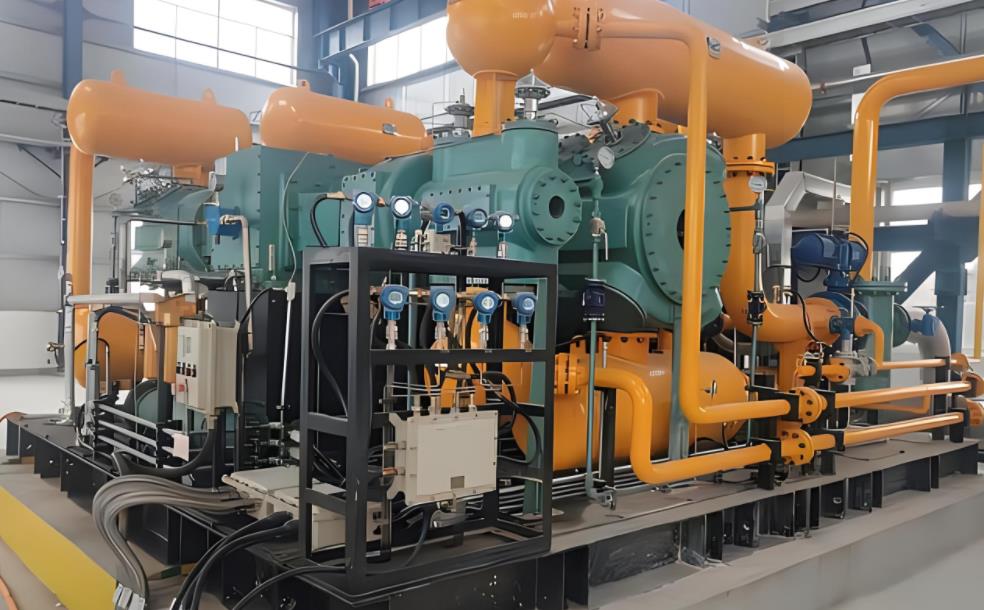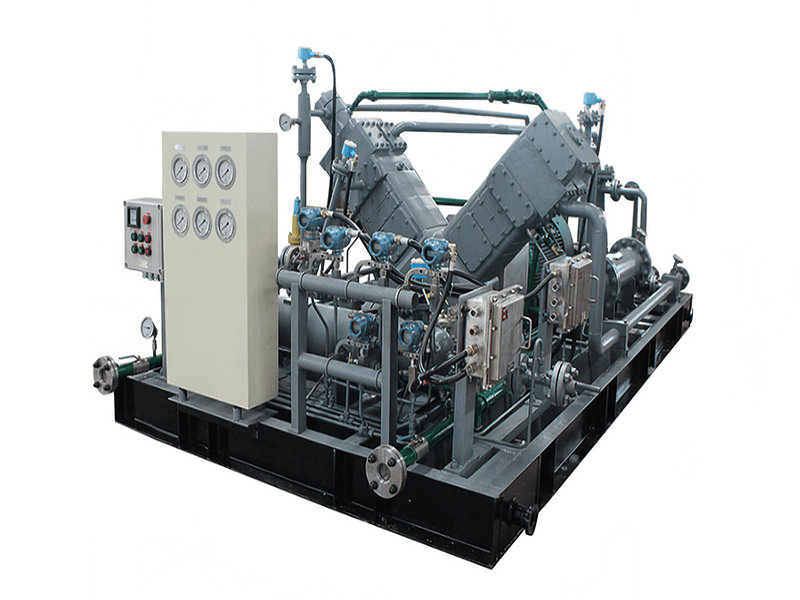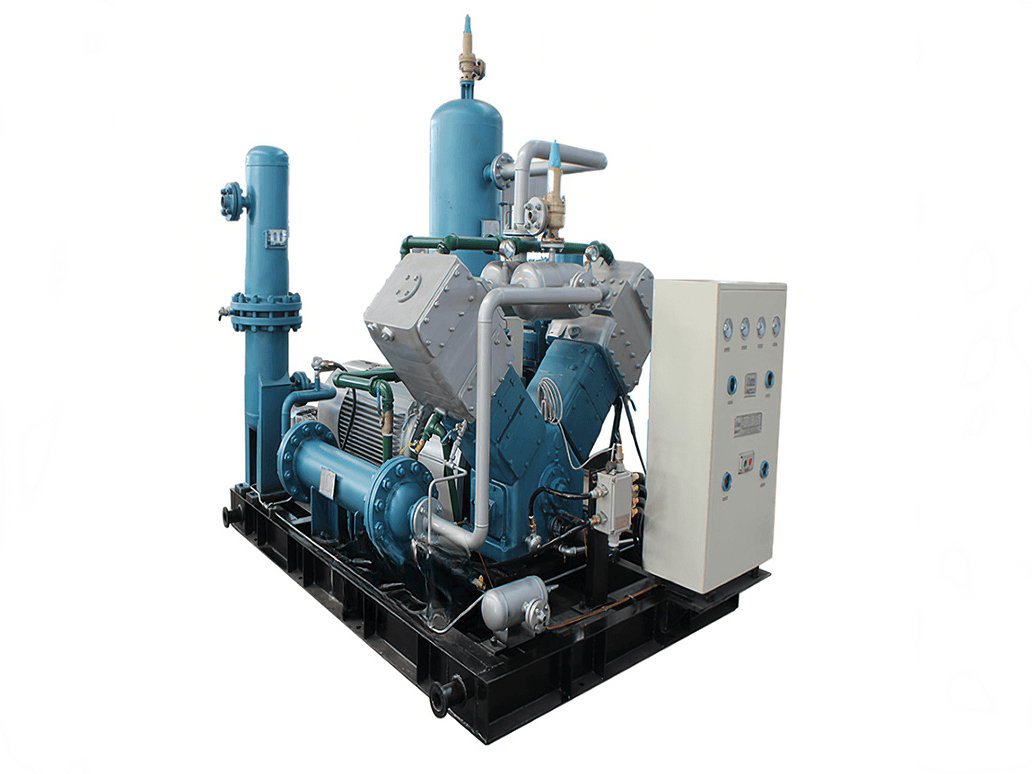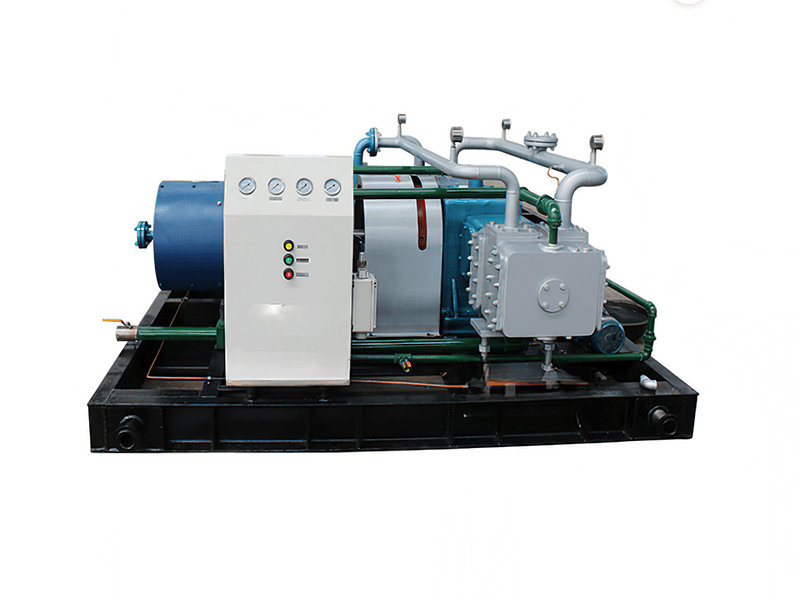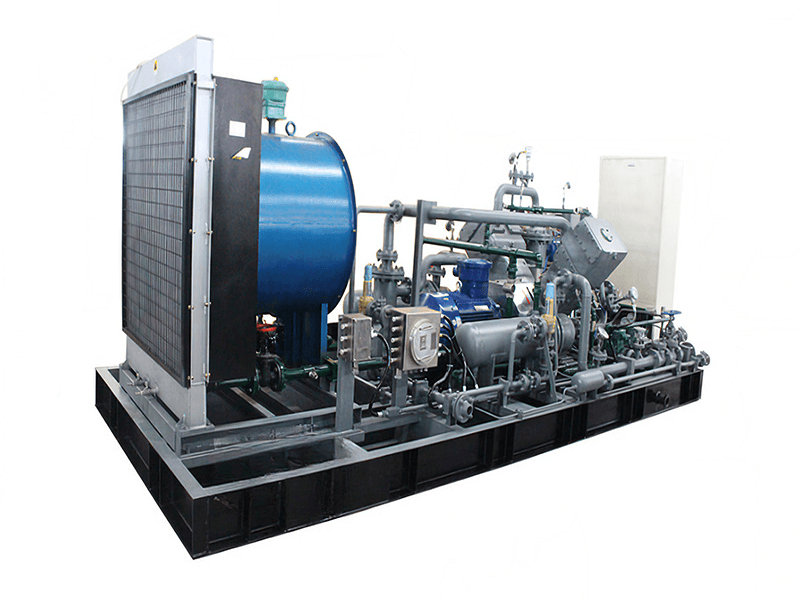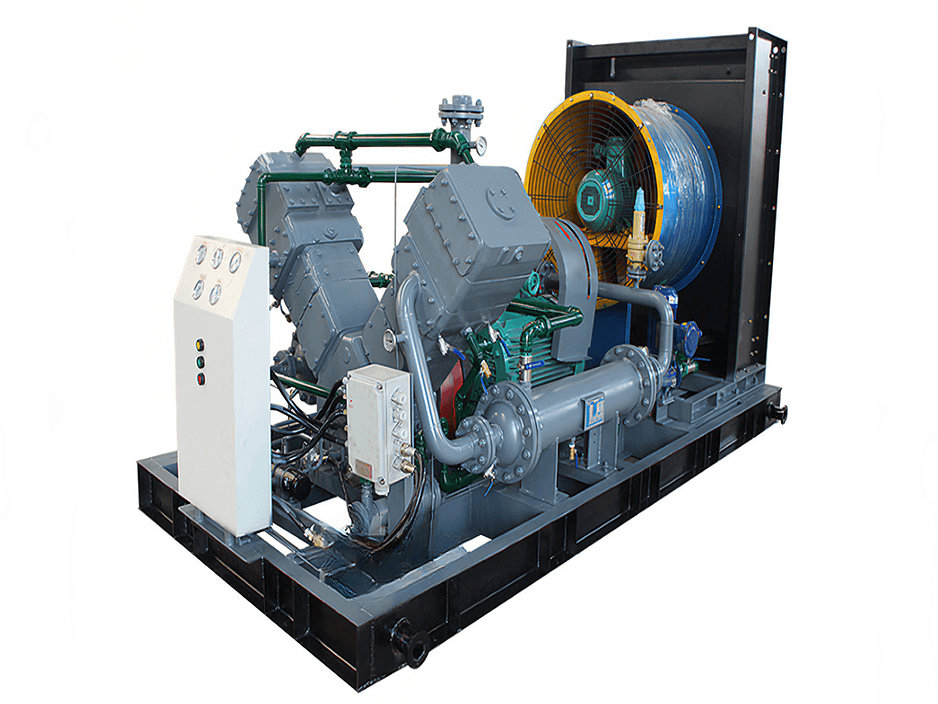In the industrial gas processing sector, compressing ordinary air differs fundamentally from compressing special gases in terms of technical requirements. According to international standards such as ISO 7396-1:2016 (Pipeline Systems for Medical Gases) and API 618 (Reciprocating Compressors for Petroleum, Chemical, and Gas Industry Services), the unique physical and chemical properties of different gases necessitate specialized engineering design and technical adaptation for compressors. Correct compressor selection is not only crucial for operational efficiency but also a prerequisite for ensuring safety, particularly when handling industrial gases with hazardous characteristics. Strict safety standards and regulatory requirements must be followed.
Special Requirements and Technical Solutions for Oxygen Compression
The primary challenge in oxygen compression is the safety risk associated with its strong oxidizing properties. According to the U.S. Compressed Gas Association (CGA) standard G-4.1, material flammability increases significantly when the oxygen partial pressure exceeds 0.21 bar. When the oxygen concentration exceeds 23%, spontaneous combustion or explosion may occur upon contact with oils. Therefore, oxygen compressors must be designed to be absolutely oil-free, and all materials in contact with oxygen require special selection. Material compatibility testing must comply with ASTM G94 standards to ensure safety in high-pressure oxygen environments.
The preferred technical solutions are oil-free screw compressors and labyrinth piston compressors. Oil-free screw compressors employ special profile designs, with rotor clearances controlled between 0.05-0.15 mm, ensuring that the male and female rotors complete the compression process without contact. Combined with Teflon coating treatment, this completely avoids spark generation from metal friction. Labyrinth piston compressors, on the other hand, utilize special labyrinth seal structures, forming tortuous leakage paths through a series of precision-machined annular grooves to achieve contactless sealing. They are particularly suitable for high-pressure oxygen compression at 20-50 MPa. For ultra-high-purity oxygen applications, all flow path surfaces must undergo electropolishing (EP) treatment to ensure a surface roughness of Ra ≤ 0.4 μm, reducing the risk of impurity accumulation and ignition.

Technical Challenges and Solutions for Hydrogen Compression
The main challenges in hydrogen compression stem from its smallest molecular diameter (0.289 nm) and low density, making it highly prone to leakage and permeation. According to the U.S. Department of Energy (DOE) technical standards, hydrogen's diffusion coefficient is three times that of methane, significantly increasing leakage risks. Additionally, the explosive range of hydrogen-air mixtures is extremely wide (4%-75%), demanding extremely high sealing performance from equipment. Hydrogen embrittlement is another critical concern, as hydrogen atoms can penetrate metal lattices under high pressure and temperature, reducing material toughness.
To address hydrogen's characteristics, ionic liquid compressors and specially designed piston compressors are typically employed. Ionic liquid compressors use incompressible ionic liquids as piston media, achieving a near-isothermal compression process and controlling temperature rise to within 10°C, effectively reducing leakage risks. Specially designed piston compressors adopt multi-stage compression design, with interstage cooling ensuring discharge temperatures below 100°C. They are equipped with double dry gas seal systems, where the seal gas pressure is always maintained 0.2-0.3 MPa higher than the process gas pressure. For large-scale hydrogen compression systems, diaphragm compressors are recommended. These use metal diaphragms to completely isolate the process gas from hydraulic oil, achieving 100% leakage-free compression.
Safety Considerations and Equipment Selection for Chlorine Compression
Chlorine, being highly toxic and strongly corrosive, requires special attention to safety protection and material corrosion resistance during compression. According to the U.S. Chlorine Institute Pamphlet 6 standard, chlorine leakage can not only cause equipment corrosion but also lead to major safety incidents. When chlorine's water content exceeds 50 ppm, it forms hydrochloric acid, causing severe corrosion to carbon steel. Therefore, the gas dew point must be strictly controlled below -40°C.
Liquid ring compressors are the preferred solution for chlorine compression. They use concentrated sulfuric acid as the working fluid to form a protective passivation film, preventing chlorine corrosion. The compressor casing is made of Hastelloy C-276 (UNS N10276) or titanium (Grade 2), while the impeller is manufactured from ultra-low-carbon stainless steel 316L (UNS S31603) or duplex stainless steel 2205 (UNS S32205). The system design must incorporate double mechanical seals: the primary seal is made of corrosion-resistant PTFE, and the secondary seal is made of special alloy. The seal chamber is continuously purged with nitrogen to maintain a slight positive pressure (0.1-0.2 bar), ensuring no chlorine leakage. All pipes and valves in contact with chlorine require special treatment, with internal surfaces polished to Ra ≤ 0.4 μm to reduce chlorine adhesion and corrosion.
Technical Requirements and Safety Standards
The design and manufacturing of compressors for special gases must adhere to strict technical specifications and standards. For oxygen systems, compliance with ISO 21789 (Gas Turbines - Safety for Gas Turbine Applications) and EIGA IGC 33/18 (Oxygen Pipeline Systems) is mandatory. All components must undergo rigorous degreasing before assembly, using specialized solvents such as trichloroethane or acetone to ensure oil and grease content remains below 25 mg/m². Hydrogen systems must meet ASME B31.12 (Hydrogen Piping and Pipelines) requirements, with 100% radiographic inspection and hardness testing for all welded joints to prevent hydrogen-induced cracking. Chlorine systems must comply with API 681 (Petroleum, Petrochemical, and Natural Gas Industries - Liquid Ring Compressors), equipped with dual safety relief systems. Relief gases must be directed to alkali neutralization treatment units.
Equipment installation and operating environments also have special requirements: oxygen compressor rooms must be strictly oil-free and equipped with dedicated fire suppression systems using carbon dioxide or inert gases. Water or foam extinguishers are prohibited. Hydrogen Compressor rooms require forced ventilation with a minimum of 12 air changes per hour and must be equipped with hydrogen concentration detection and alarm systems, with detection probes spaced no more than 5 meters apart. Chlorine compressor rooms should have negative-pressure exhaust systems and emergency absorption units to ensure timely handling of leaks. The treatment capacity of absorption units must be at least 150% of the maximum potential leakage.
When compressing special gases, safety is priceless. We possess extensive experience in designing and manufacturing compressors for various special media. From material selection and sealing technology to safety protection systems, we ensure absolute safety and reliability for your processes. Our engineering team can provide complete customized solutions based on ASTM, ASME, ISO, and other relevant standards, tailored to your specific operational needs. Contact us now for professional technical advice and equipment selection solutions.
Note: The technical solutions described herein are based on international engineering standards. Specific equipment selection requires professional calculation and evaluation based on actual operational parameters. The design, installation, and operation of special gas compression systems must be performed by qualified professionals and strictly comply with national safety technical specifications for special equipment, such as TSG 21-2016 (Safety Technical Supervision Regulation for Stationary Pressure Vessels) and TSG R0001-2019 (Safety Technical Supervision Regulation for Pressure Pipes). All special gas compressors must undergo Hazard and Operability (HAZOP) studies before commissioning, and comprehensive emergency plans must be developed.


